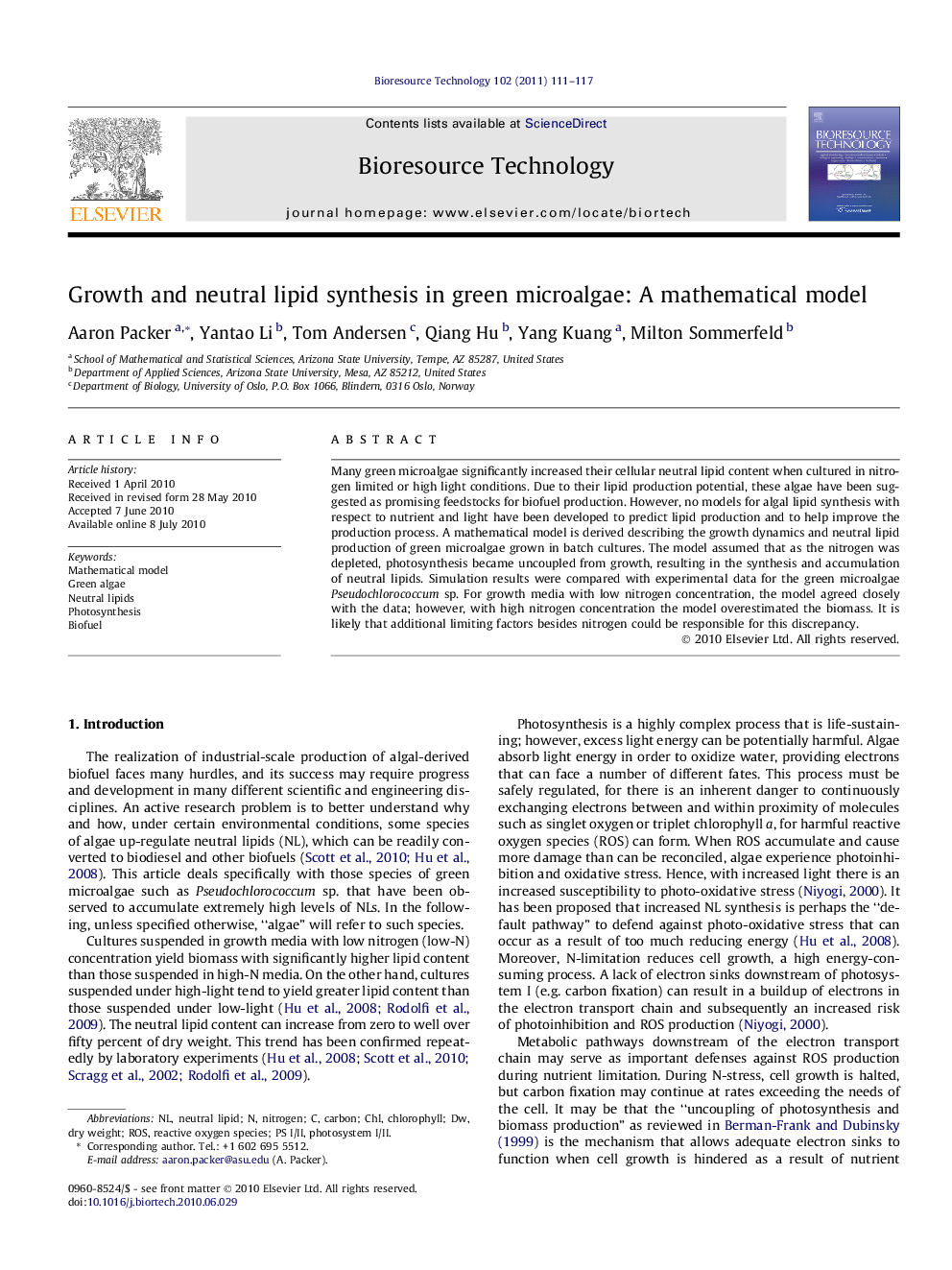| Article ID | Journal | Published Year | Pages | File Type |
|---|---|---|---|---|
| 682363 | Bioresource Technology | 2011 | 7 Pages |
Many green microalgae significantly increased their cellular neutral lipid content when cultured in nitrogen limited or high light conditions. Due to their lipid production potential, these algae have been suggested as promising feedstocks for biofuel production. However, no models for algal lipid synthesis with respect to nutrient and light have been developed to predict lipid production and to help improve the production process. A mathematical model is derived describing the growth dynamics and neutral lipid production of green microalgae grown in batch cultures. The model assumed that as the nitrogen was depleted, photosynthesis became uncoupled from growth, resulting in the synthesis and accumulation of neutral lipids. Simulation results were compared with experimental data for the green microalgae Pseudochlorococcum sp. For growth media with low nitrogen concentration, the model agreed closely with the data; however, with high nitrogen concentration the model overestimated the biomass. It is likely that additional limiting factors besides nitrogen could be responsible for this discrepancy.
